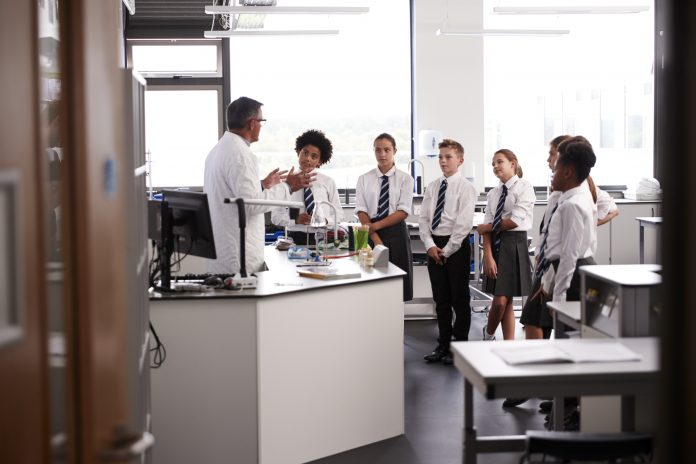The COVID pandemic compelled students to migrate to screens, leaving teachers to get creative to protect their educational progress – which now means teaching science via Zoom
Students not turning on their cameras, falling behind in their personal development and losing out on the socialisation of a classroom are also suffering in another area – the loss of hands-on, mentally engaging science experiments.
“Keeping students engaged and learning was often challenging during the unexpectedly sudden transition from in-person to fully remote education stemming from the COVID-19 pandemic,” said co-author Genia Naro-Maciel.
When it comes to science, the stereotypical trinity of lab-coats, colourful liquids and minor explosions flood pop culture representations. But in reality, students who see and participate in a visual demonstration of complex concepts get to learn them much more easily. The level of responsibility and consequence that exists in a scientific experiment can even be empowering.
How can teachers replace experiments via Zoom?
“These varied exercises allow students to engage, team up, get outside, do important lab work, and carry out group investigations and presentations under extraordinarily challenging circumstances–and from all over the world,” said Erin Morrison, a professor in Liberal Studies at New York University and the lead author of the paper.
“The active-learning toolbox can be effectively used from a distance to ensure quality science education even under sudden conditions in a public health crisis.”
What are the exercises?
1. The Biodiversity Activity
This experiment asks students to walk around their neighbourhoods and identify unique plant species. The exercise could be conducted locally at any time and in any place using the freely available SEEK organismal identification app or an alternative. Paired students from different sites around the world then analysed data and prepared online presentations, thus fully engaging in the scientific process while stepping away from their computers and into nature.
2. An Interactive Human Genetics Lab
In the interactive lab, online students learned about Mendelian inheritance by remotely interacting with each other and focusing on human traits. Class data collected through these observations were then analysed and used to discuss related scientific concepts and misconceptions. This online activity successfully engaged students and promoted learning gains by preserving a focus on human traits, and the ability to observe classmates’ faces, while facilitating valuable student-student interactions during the collection, analysis, and discussion of class-generated data.
3. Environmental Science Research Project
The pandemic further provided an opportunity to upgrade an in-person conservation biology research project into an online exploration of environmental health, through the lens of the pandemic being experienced in real time. Students worked digitally in teams to explore, analyse, and present under-emphasised, but significant, interactions between human health and environmental health.
The often-overlooked relationships between the spread of diseases like COVID-19 and the wildlife trade or deforestation were focused on to highlight connections among human and non-human systems.
Students also explored and learned how to debunk myths and misconceptions, developing key critical thinking skills amidst rampant and increasing misinformation and disinformation.
Did the remotely-held experiments work?
Apparently so. The researchers found that the Human Genetics Lab was most engaging for their students, with the cohort then performing well on exam questions related to the concepts explored when collecting human traits from one another. In fact, they performed better in exams about this than they did when teaching was in-person.
Professor Morrison further commented: “The work shows how faculty can leverage the flexibility of the online environment and use existing remote tools to expand active learning possibilities and create meaningful classroom connections, even at a distance and during a global pandemic.
“Despite class members being physically distanced from each other all over the planet, timely and effective communication was preserved, and students were able to access alternative and freely available materials to engage in and complete hands-on field, research, and lab activities.”











